How can you make jewelry boxes using machines?
Making beautiful jewelry boxes by hand takes a lot of time and skill. It can be hard to make them all look the same, especially if you need many boxes. This can slow down your business.
You can make high-quality jewelry boxes fast and consistently by using specialized machines. These machines handle steps like cutting board, grooving, corner pasting, spotting, and wrapping. 12
Let me tell you how I see this process working and how machines help. It makes a big difference for businesses that need to produce many boxes. Keep reading to learn more about the machines involved and what they cost.
How much do jewelry box making machines cost?
Thinking about getting machines can feel like a big step. Maybe you worry they are too expensive or too complex for your business. You might wonder if the cost is worth the money you will make.
Jewelry box making machine costs vary a lot based on the machine type and how automatic it is. Simple machines might cost a few thousand US dollars, while fully automatic lines can cost tens of thousands. 12
!
Based on what I know and the machines I have seen, the cost depends on what you need the machine to do and how many boxes you need to make. Here is how I break down the costs of different machines.
Different machines do different parts of the job. For example, a Corner Pasting Machine like the KY-40 can cost around US$1,500 to $2,500. 12 This machine helps stick the corners of the rigid board frame together. A Box Forming Machine, which wraps the paper around the board structure, like the KY-500, might be around US$8,500 or US$16,800 depending on the model and features. 12
For a machine that presses and folds the box sides, especially for different shapes, you might look at a box press and fold machine with 8 air cylinders. This type can make 4-8 sides. Its cost is higher, perhaps around US$19,800. 34 If you need to cut V-grooves in the board so it folds cleanly, a Grooving Machine helps. A semi-auto model (KY-1200) is about US$6,500, and an auto model (KY-1200A) is around US$8,800. 2
If you want a machine that does many steps automatically, you might look at an Auto Rigid Box Machine, like the KY-430A. This kind of machine can include feeding the board and paper, gluing, spotting (placing the board accurately on the paper), and wrapping (folding the paper around the board). 2 An automatic machine like this has a higher cost, potentially US$49,500. 2
Here is a simple look at how costs vary:
| Machine Type | Example Model | Estimated Cost (US$) | Purpose |
|---|---|---|---|
| Corner Pasting Machine | KY-40 | $1,500 - $2,500 | Gluing corners of board frame |
| Box Forming/Wrapper | KY-500 | $8,500 - $16,800 | Wrapping paper around the box structure |
| Box Press and Fold | - | $19,800 | Folding and pressing box sides (4-8 sides) |
| Semi-Auto Grooving | KY-1200 | $6,500 | Cutting grooves in board |
| Auto Grooving | KY-1200A | $8,800 | Automatic grooving |
| Auto Rigid Box Line | KY-430A | $49,500 | Full automatic process (spotting, wrapping) |
1234
Remember these are example costs. Prices can change based on specific features, suppliers, and shipping terms like Exw-factory, which means you handle transport costs from the factory. 2 We usually ask for 50% deposit and 50% before shipping. 2 We also offer a one-year quality warranty. 2
What do you call a machine that makes boxes?
Sometimes the names for machines can be confusing. You might hear different terms and wonder what machine does what job. Knowing the right name helps you find the machine you need.
Machines used to make boxes have specific names based on the step they perform. Common names include corner pasting machine, box forming machine, box wrapper, grooving machine, and rigid box making machine. 125
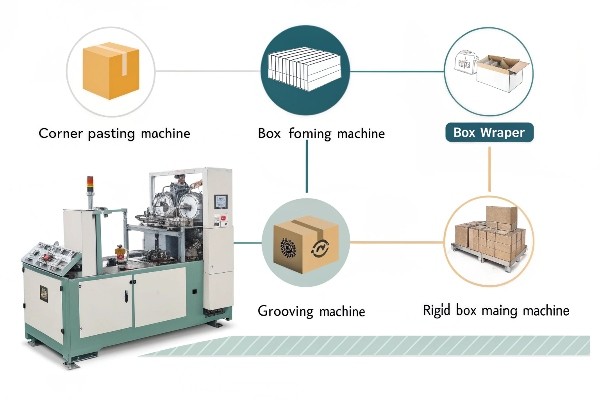
I often hear people ask about machine names. It is true that there is no single machine called "a box making machine" that does everything from start to finish, especially for complex boxes like rigid jewelry boxes. Instead, it is a line of machines. Each machine does one or maybe two specific jobs really well. I like to explain it by looking at the different steps needed to build a rigid box.
First, you need to prepare the board. This might involve cutting the board into the right shapes. Then, for a strong box, you often groove the board. Grooving machines 2, like the KY-1200 or KY-1200A, cut V-shaped lines where the board needs to fold perfectly. This makes the folds sharp and clean, which is important for a high-quality box.
After grooving and folding the board into shape, you need to fix the corners. A Corner Pasting Machine 12, like the KY-40, is used for this. It applies glue and tapes the corners to make the rigid structure.
Next, you prepare the outer cover paper. This often involves gluing the paper. Then, you need to place the board structure onto the glued paper very accurately. This is where a Spotter machine comes in. Some advanced rigid box lines, like the KY-430A, have an Auto Spotter 2 built-in. Spotting makes sure the cover paper lines up perfectly with the board edges before wrapping.
Finally, you wrap the glued paper around the board structure. This is done by a Box Forming Machine or Box Wrapper 12, like the KY-500. It folds the edges of the paper neatly over the board and presses them down. For different box shapes or those with many sides, a box press and fold machine can be used to ensure crisp folds and strong joins. 34
Sometimes people refer to a machine that does the final wrapping or forming part as "the box making machine" because it is where the box shape really comes together with its outer paper. But for a complete rigid box, you typically use several different machines working together in a line. We also call the full line a rigid box machine or rigid box making machine. 2
Knowing these names helps you talk to suppliers and ask for the right machine for the specific job you need done. It makes finding the right equipment much easier.
How can you make a jewelry box yourself using machines?
Making a jewelry box needs several steps, even with machines. You might wonder how the whole process works from start to finish. You want to know the sequence of using the machines to get the final beautiful box.
Making a jewelry box using machines involves preparing the paper and board, forming the rigid structure with corner pasting, accurately positioning the board on glued paper (spotting), and finally wrapping the paper around the board using a box forming or wrapping machine. 12
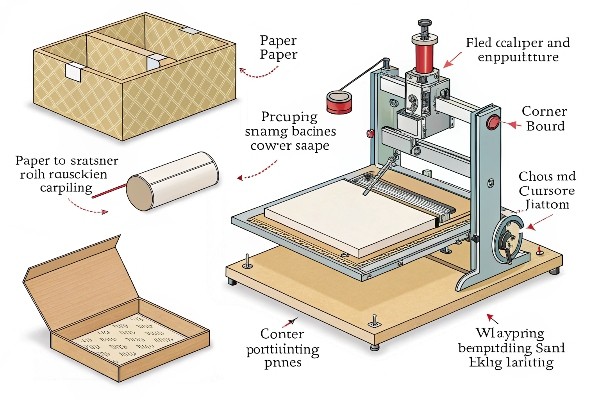
Let me walk you through the basic steps when using machines to make a typical rigid jewelry box. I have seen this process many times in our factory and with our customers’ machines. It is quite efficient.
First, you need your materials ready. You need cardboard for the box structure and decorative paper for the outer cover and lining. 6 The board is cut to the correct size for the bottom and lid parts of the box. If the box design requires clean folds, the board goes through a grooving machine 2 first to cut precise V-grooves.
Next, the cut and grooved board pieces for the sides and bottom are assembled. You use a Corner Pasting Machine 12 to apply glue and tape to the corners, creating the sturdy frame of the box base and lid. This machine makes sure the corners are strong and square.
While the board structure is being formed, the decorative cover paper is prepared. This paper goes through a gluing machine to apply an even layer of adhesive. After gluing, the paper is transferred to the next step.
Now, you need to combine the board structure with the glued cover paper. This is a crucial step. The board must be placed exactly in the center or the correct position on the paper. This step is called spotting. An Auto Spotter, often part of an automatic rigid box machine 2 like the KY-430A, uses technology like cameras or guides to place the board perfectly onto the glued paper. This ensures the finished box looks neat and professional.
Finally, the partially wrapped box goes to a Box Forming Machine or Wrapper 12. This machine takes the board structure with the glued paper and folds the excess paper over the edges and into the inside of the box. It smooths the paper and presses it down to create a clean, finished look. Some machines can also press and fold specific box shapes. 34
For the inside of the box, you might use another machine or a manual process to glue and insert lining paper or foam inserts. Using machines for the main structure makes the process fast and ensures every box is the same high quality. We offer machines that handle steps like grooving, spotting, and wrapping 2, which are key parts of making rigid boxes like jewelry boxes.
What kinds of machines help make boxes?
Many different types of boxes exist, and they need different machines. You might wonder which specific machines are used, especially for making strong, high-quality boxes like those used for jewelry. Knowing the machine types helps you understand the production process.
Several types of machines are essential for making boxes, especially rigid boxes. These include machines for grooving board, pasting corners, spotting the board onto paper, wrapping the box sides, and sometimes specialized press and fold machines. 213

Let me share the types of machines that are commonly used in the box making industry, focusing on rigid boxes which are often used for jewelry. I know these machines well because my company, Kylin Machinery Limited, specializes in post-press equipment for paper converting and rigid box solutions. [^Company Profile]
First, you have machines that prepare the main material, which is paperboard. If you need sharp, crisp corners on your rigid box, you will likely use a Grooving Machine 2. These machines cut precise V-grooves into the board, allowing it to fold perfectly at 90-degree angles or other angles needed. We have both semi-automatic and automatic grooving machines 2.
Once the board is cut and potentially grooved, you form the basic structure. For rigid boxes, this means making a tray or base shape. A Corner Pasting Machine 12 is used to apply hot melt glue or tape to the corners of the folded board pieces, securing them together to create a strong, rigid frame. The KY-40 is an example of this type of machine. 12
Next, the outer decorative paper or material is prepared, often by applying glue. The rigid board structure then needs to be placed very accurately onto this glued paper. This step, called spotting, is done by a Spotting Machine or a Spotter module integrated into a larger machine. Precise spotting is critical for ensuring the final wrapped box looks symmetrical and high-quality. Our automatic rigid box machines often include an Auto Spotter 2.
After spotting, the paper needs to be folded neatly around the board structure. This is the job of a Box Forming Machine or Wrapper 12. Machines like the KY-500 take the spotted board and paper and automatically fold and press the edges and sides to complete the box shape. Some wrappers are semi-automatic, requiring an operator to feed the parts, while others are fully automatic. 2
For boxes with complex folds or more than four sides, specialized machines like a box press and fold machine 34 might be used after the initial wrapping to ensure crisp folds and strong bonds on all sides.
In summary, making high-quality rigid boxes relies on a series of specialized machines working together. This includes Grooving Machines, Corner Pasting Machines, Spotting Machines, and Box Forming/Wrapping Machines. 21 Choosing the right combination and level of automation depends on the required production volume and box complexity.
Conclusion
Using machines makes creating beautiful, consistent jewelry boxes efficient. Machines like grooving, corner pasting, spotting, and wrapping machines handle key steps fast. Investing in the right equipment helps businesses meet demand with high quality.


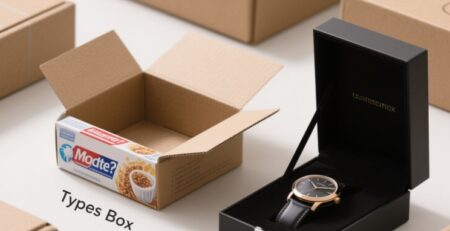
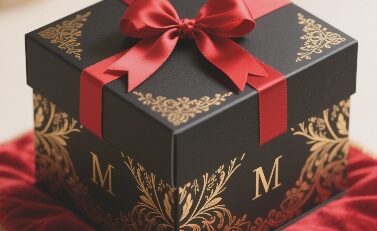

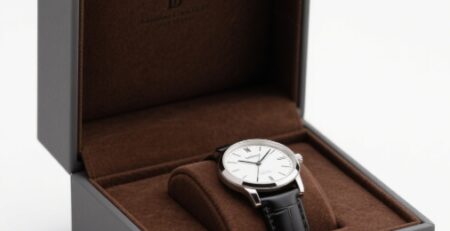
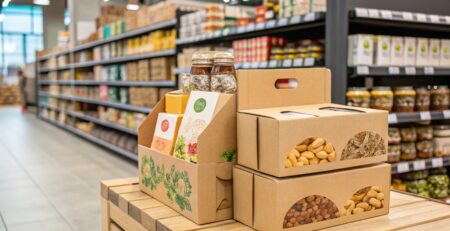
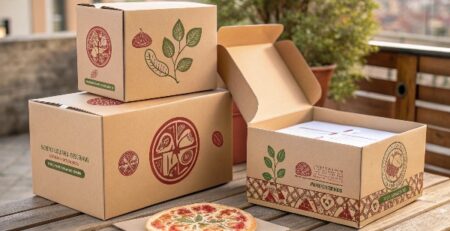
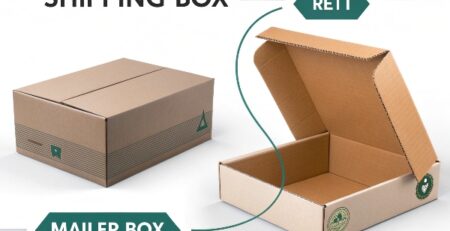



发表回复